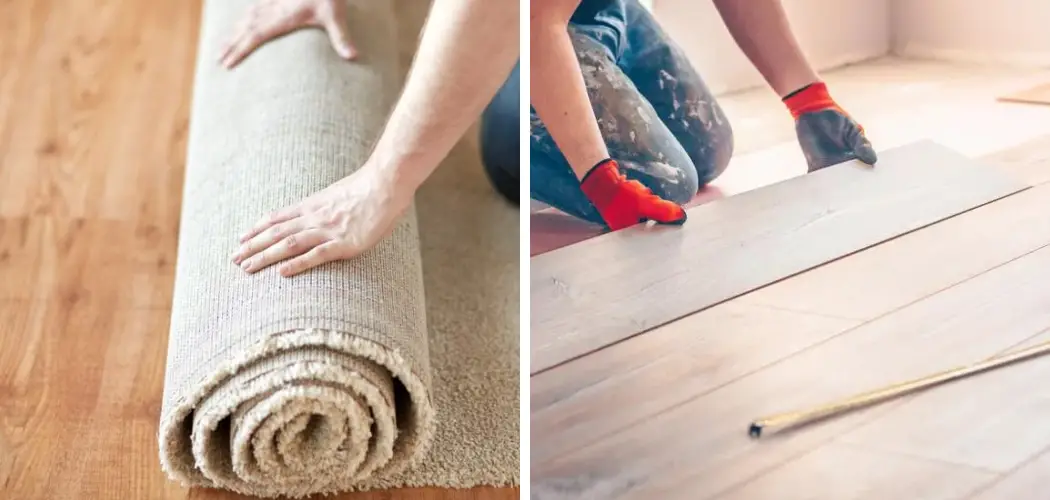When it comes to home renovation, one of the most common upgrades is removing carpet and installing hardwood flooring. This can not only drastically change the look of a room but also increase the value of your home. However, this project can seem daunting to many homeowners. But fear not! With some proper planning and preparation, you can successfully take out carpet and install beautiful hardwood flooring on your own. In this guide, we will go through the step-by-step process of how to take out carpet and install hardwood flooring in your home.
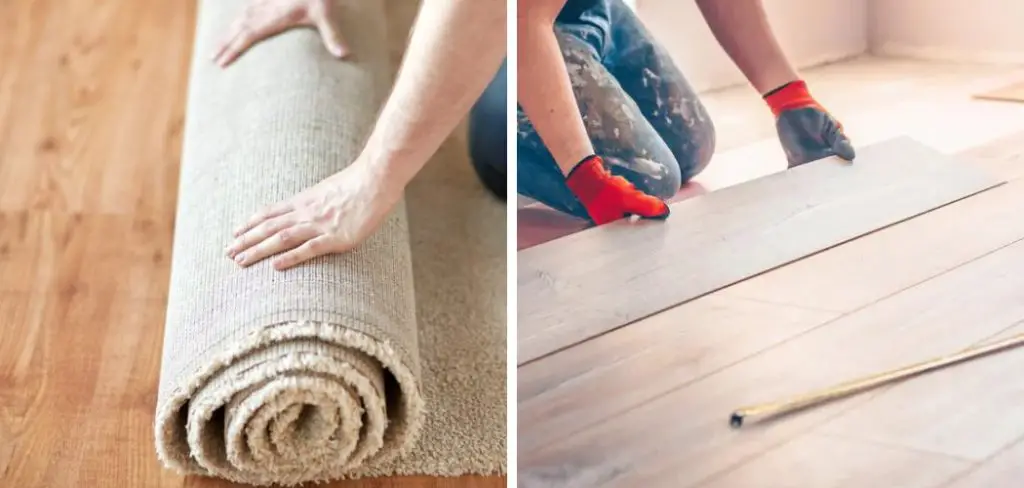
Necessary Items
Before you start this project, it’s important to gather all the necessary items. These include:
- Protective gear (gloves, safety glasses)
- Carpet removal tools (carpet knife, pliers)
- Pry bar
- Floor scraper
- Hammer or mallet
- Dust mask and respirator
- Measuring tape and leveler
10 Signs It’s Time to Replace Your Carpet
1) Wear and Tear
Over time, carpet can become worn and frayed from constant foot traffic. This can make your floors look old and dingy. Installing hardwood flooring can give your space a fresh, new look. If your carpet has visible wear and tear, it’s a good sign that it’s time for a replacement.
2) Stains and Spills
No matter how careful you are, accidents happen. And unfortunately, sometimes those spills and stains can be permanent on the carpet. If your carpet is covered in unsightly spots, it’s time to upgrade to hardwood flooring.
3) Allergies
Carpet can trap dust, pollen, and other allergens. If you or your family members suffer from allergies, replacing carpet with hardwood flooring can greatly improve air quality in your home. As a bonus, hardwood flooring is easier to clean and doesn’t hold onto allergens like carpet does.
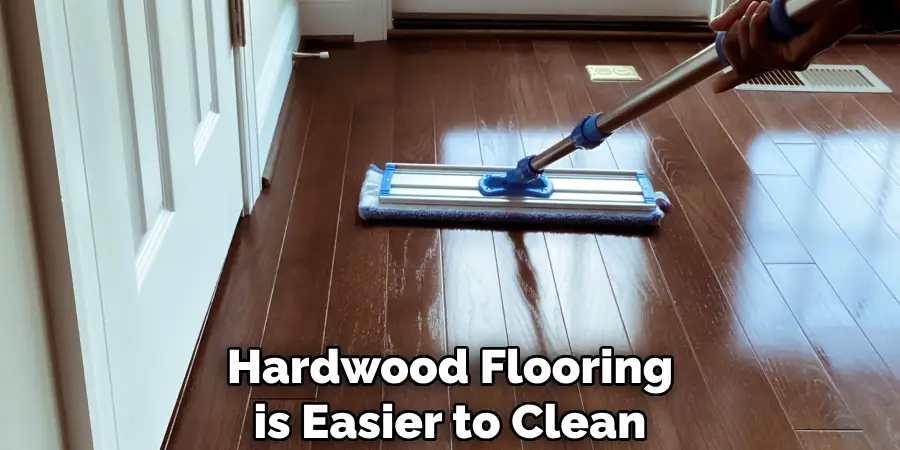
4) Odors
Carpet can absorb and trap odors, making your home smell musty or unpleasant. If you’ve tried everything to get rid of the smell with no success, it’s time for a new floor. Hardwood flooring is less likely to trap odors and can help keep your home smelling fresh and clean.
5) Mold or Mildew
If you live in a humid climate, chances are you’ve experienced mold or mildew growth on your carpet. This not only looks unsightly, but it can also be harmful to your health. Replacing the carpet with hardwood flooring can prevent future mold and mildew growth.
6) Pet Damage
Pets can be hard on carpets, whether it’s from accidents or constant scratching. If your carpet is showing signs of pet damage, it may be time to switch to a more durable flooring option like hardwood.
7) Difficulty Cleaning
Carpet can be notoriously tricky to clean, especially when dealing with tough stains. If you find yourself constantly struggling to maintain your carpet’s appearance, consider investing in hardwood flooring, which is much easier to clean and maintain.
8) Outdated Appearance
In addition to wear and tear, carpet can simply look outdated over time. If your carpet is an old style or color that no longer fits your aesthetic, installing hardwood flooring can give your space a modern and updated look.
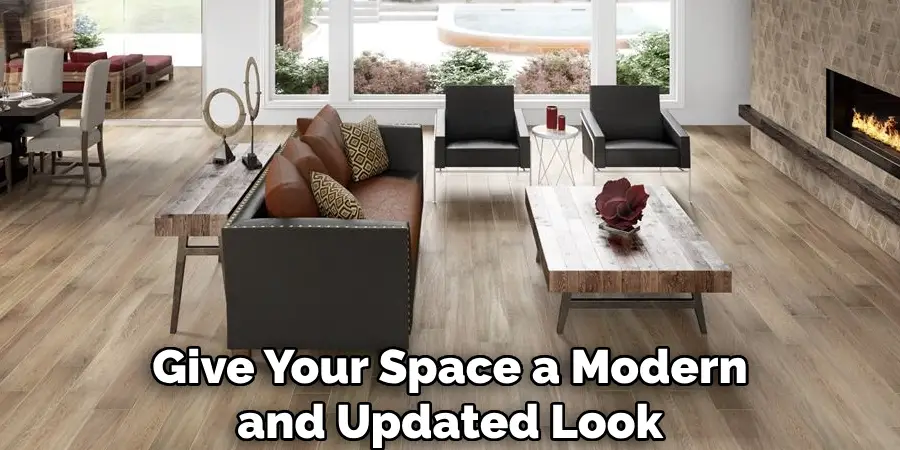
9) Increased Home Value
Hardwood flooring is not only aesthetically pleasing, but it can also increase the value of your home. If you’re planning on selling in the future, switching from carpet to hardwood can be a wise investment.
10) Personal Preference
At the end of the day, it’s your home, and you should feel comfortable and happy with the flooring you choose. If you simply prefer hardwood over carpet, then that is reason enough to make the switch.
Taking out carpets and installing hardwood flooring can be a challenging project, but with the right tools and approach, it can be done successfully. If you’re experiencing any of the signs mentioned above, it may be time to consider making the switch to beautiful hardwood flooring in your home. Not only will it improve the overall look and feel of your space, but also potentially increase its value. So, gather your tools and get ready to transform your floors! Remember to always follow safety precautions and seek help from professionals if needed.
12 Steps on How to Take Out Carpet and Install Hardwood
Step 1: Gather Materials and Tools
Before you begin the project, it is important to have all the necessary materials and tools on hand. This will save you time and ensure a smooth installation process. Refer to the list above for the items you will need.
Step 2: Prep the Area
Remove all furniture and loose objects from the room. This will give you ample space to work and prevent any damage to your belongings. Cover any doorways or vents with plastic sheeting to keep dust and debris from spreading throughout your home.
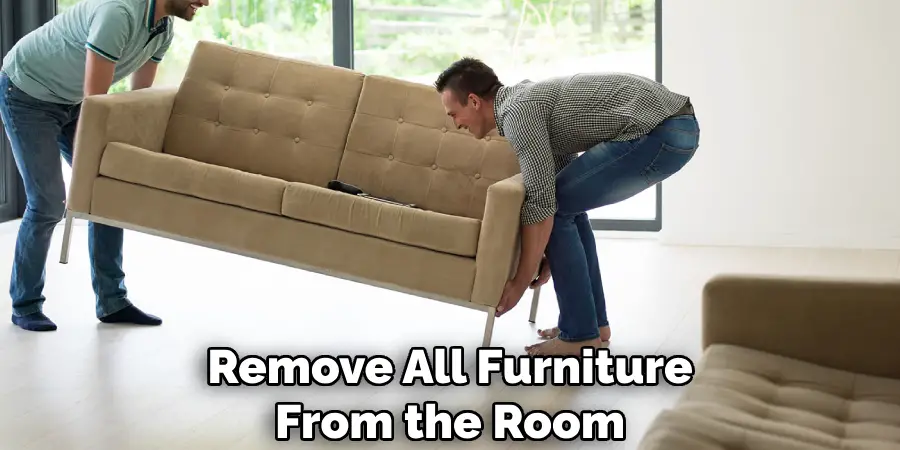
Step 3: Wear Protective Gear
Always remember to wear protective gear, including gloves, safety glasses, and a dust mask or respirator to protect yourself from any potential hazards. So, take the necessary precautions before starting the project.
Step 4: Begin Removing Carpet and Padding
Start at one corner of the room and use a carpet knife to cut along the edge of the baseboard or wall. Then, grab onto the carpet and pull it back towards you. Continue this process until all the carpet is removed from the room. You can also use a pry bar to help with the removal if needed.
Step 5: Remove Tack Strips
With the carpet removed, you should now see tack strips along the edges of the room. These are used to hold down the carpet and will need to be removed before installing hardwood flooring. Use pliers or a floor scraper to remove them carefully and avoid damaging the subfloor.
Step 6: Take Out Carpet Padding and Staples
Next, remove any remaining carpet padding and staples from the floor using a pry bar or pliers. This will ensure a smooth surface for your new flooring to be installed on. So, take your time and be thorough in this step.
Step 7: Clean the Subfloor
Use a broom or vacuum to remove any debris and clean the subfloor. This will ensure proper adhesion for your new hardwood flooring. You may also need to fill in any cracks or holes with wood filler and sand them down for a smooth finish.
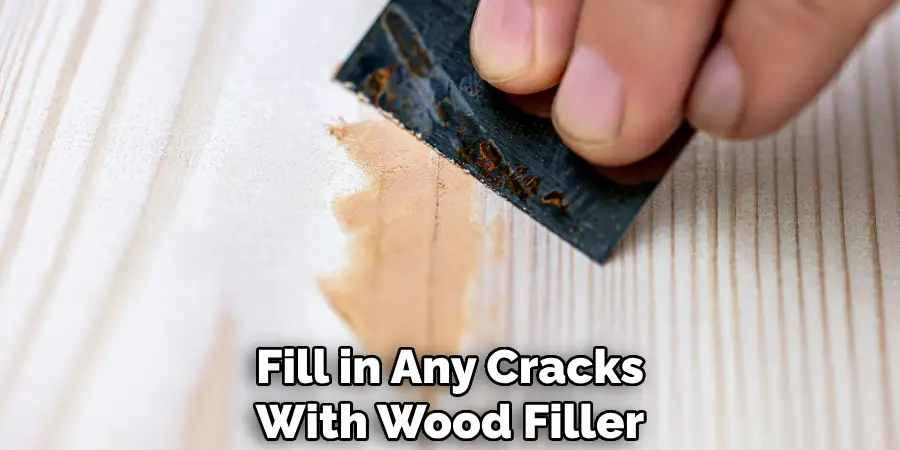
Step 8: Measure and Plan
Measure the room to determine the amount of flooring you will need. It is always recommended to purchase extra in case of any mistakes or cutting errors. Use a chalk line or straight-edge tool to mark out your layout plan for the hardwood planks before installing them.
Step 9: Install Underlayment (optional)
Some hardwood flooring may require an underlayment for added stability and soundproofing. Follow the manufacturer’s instructions on how to install it properly. And make sure it is secured tightly to the subfloor.
Step 10: Begin Installing Hardwood Flooring
Start in one corner of the room and begin laying down your hardwood flooring according to your layout plan. Use a pneumatic flooring nailer or hammer and finishing nails to secure each plank into place. Be sure to leave a small gap around the edges of the room for expansion and contraction.
Step 11: Finishing Touches
Once all the planks are installed, use a circular saw to trim any excess overhanging edges. Install baseboards or quarter-round molding along the perimeter of the room to give it a finished look. You may also choose to stain or seal your hardwood flooring for added protection and aesthetic appeal.
Step 12: Enjoy Your New Hardwood Floor!
Congratulations, you have successfully taken out the carpet and installed beautiful hardwood flooring in your home! Take a moment to appreciate your hard work and enjoy your new floor for years to come. And remember, always properly maintain your hardwood flooring to ensure its longevity and beauty. So, don’t be intimidated by the process and go ahead with confidence to upgrade your flooring from carpet to hardwood. It will not only improve the look of your home but also provide several long-term benefits.
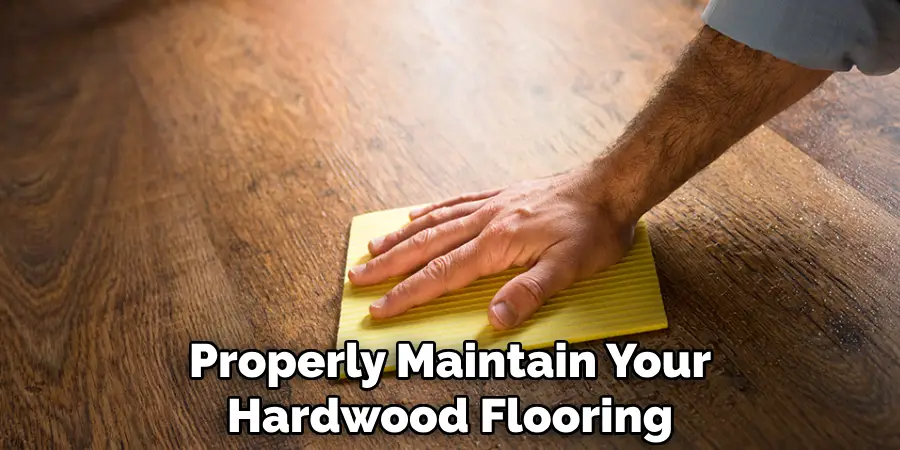
8 Things to Avoid When Taking Out Carpet and Installing Hardwood
1. Not Wearing Protective Gear
As mentioned before, always wear protective gear to avoid any potential hazards or injuries during the project. This includes gloves, safety glasses, and a dust mask or respirator. Safety should always be the top priority when working with any tools or materials.
2. Not Having All Necessary Materials and Tools
Make sure you have all the necessary materials and tools on hand before beginning the project. This will save you time and ensure a smooth installation process. Refer to the list above for the items you will need.
3. Rushing Through Removal Process
Take your time when removing carpet, padding, and staples from the floor. Rushing through this process can lead to mistakes or damage to the subfloor. Be thorough and careful in your removal process to ensure a clean and smooth surface for your new flooring.
4. Ignoring Safety Precautions
In addition to wearing protective gear, be sure to follow all safety precautions when working with tools and materials. This includes reading instruction manuals, using tools properly, and seeking help from professionals if needed.
5. Not Measuring or Planning Properly
Proper measurement and planning are crucial for a successful flooring installation. Be sure to measure the room accurately and create a layout plan before starting the project. This will ensure you have enough flooring and prevent any cutting errors.
6. Neglecting Underlayment (if needed)
Some hardwood flooring may require an underlayment for added stability and soundproofing. Be sure to follow the manufacturer’s instructions for proper installation of the underlayment. Neglecting this step can lead to issues with your new flooring in the future.
7. Not Leaving Room for Expansion and Contraction
Hardwood flooring naturally expands and contracts with changes in temperature and humidity. It is important to leave a small gap around the edges of the room to accommodate this movement. Failure to do so can result in buckling or warping of the flooring.
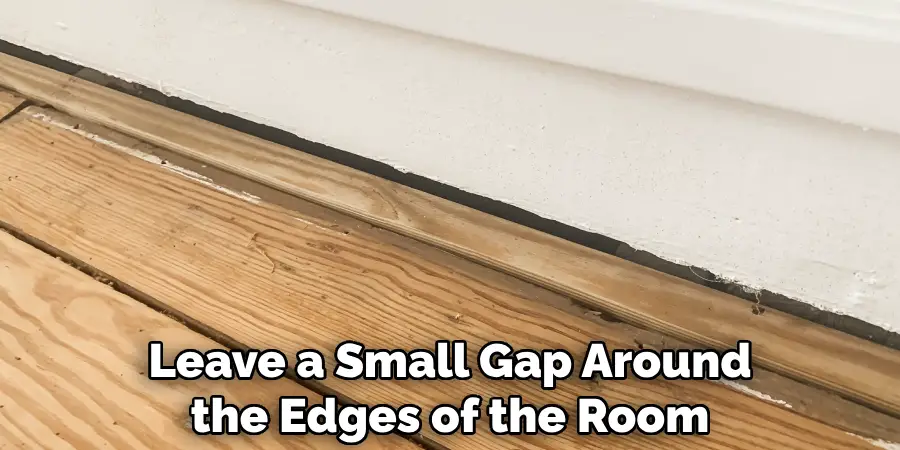
8. Skipping Finishing Touches
Finishing touches, such as trimming excess overhanging edges and installing baseboards or molding, give your new hardwood floor a polished look. Don’t skip these steps, as they add the final touch to your project and make a big difference in the overall appearance of your floor.
Taking out carpet and installing hardwood flooring is a relatively simple process that can greatly improve the look and value of your home. By following these steps on how to take out carpet and install hardwood and avoiding common mistakes, you can successfully complete this project on your own. And remember, always prioritize safety, proper planning, and attention to detail for a successful and beautiful result. So, go ahead and upgrade your flooring to hardwood for a lasting improvement in your home.
8 Additional Tips for Maintaining Your Hardwood Flooring
1. Use Furniture Pads
To prevent scratches and scuffs, use furniture pads under the legs of your furniture. This will also make it easier to move furniture without damaging your hardwood flooring. As a rule of thumb, never drag heavy furniture across your floor.
2. Clean Up Spills Immediately
Hardwood flooring is susceptible to water damage, so it’s important to clean up spills immediately to prevent any long-term issues. Use a damp cloth or mop to wipe up any spills and dry the area thoroughly.
3. Avoid High Heels
Wearing high heels on hardwood flooring can cause dents and scratches. Consider wearing slippers or removing shoes indoors to protect your floor. While hardwood flooring is durable, it’s important to take precautions to maintain its appearance.
4. Sweep or Vacuum Regularly
Dirt and debris can scratch the surface of your hardwood flooring, so it’s important to sweep or vacuum regularly. Be sure to use a soft-bristled broom or a vacuum with a floor attachment to avoid any damage.
5. Use Appropriate Cleaning Products
Avoid using harsh chemicals or steam cleaners on your hardwood flooring, as they can strip away the finish and cause damage. Instead, use a recommended hardwood floor cleaner and follow the manufacturer’s instructions.
6. Trim Pet Nails
Pets with long nails can also scratch and damage hardwood flooring. Make sure to trim their nails regularly and clean up any accidents immediately to avoid potential damage.
7. Control Humidity Levels
Excess humidity can cause hardwood flooring to expand and contract, leading to warping or buckling. Use a dehumidifier in humid climates or during the summer months to maintain proper humidity levels in your home.
8. Schedule Regular Maintenance
To keep your hardwood flooring looking its best, schedule regular maintenance such as sanding and refinishing every 3-5 years. This will help restore the shine and remove any scratches or damage to your floor.
While hardwood flooring is a durable and long-lasting option for your home, it’s important to take proper care of it to maintain its beauty and longevity. By following these additional tips on how to take out carpet and install hardwood, you can keep your hardwood flooring looking like new for years to come. Remember, prevention is key when it comes to maintaining the quality of your floors. So make sure to implement these tips and enjoy your beautiful hardwood flooring for years to come.
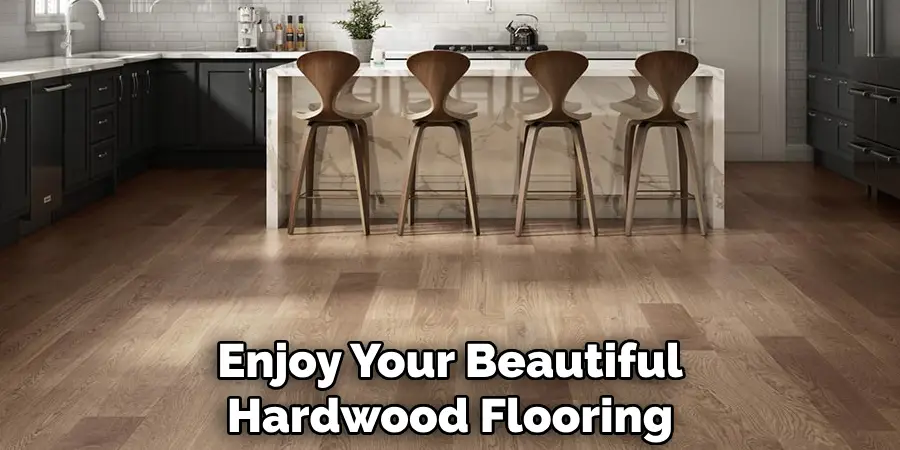
Frequently Asked Questions
Can I Install Hardwood Flooring Over Existing Tile or Carpet?
It is not recommended to install hardwood flooring over existing tile or carpet, as it can cause unevenness and affect the stability of your new floor. It’s important to remove any existing flooring before installing hardwood.
How Long Does It Take to Install Hardwood Flooring?
The time it takes to install hardwood flooring will depend on the size of the room and your level of experience. On average, it can take 1-3 days for a DIY project and 1-2 days for professional installation.
Do I Need to Acclimate My Hardwood Flooring Before Installation?
Yes, it’s important to acclimate your hardwood flooring for at least 48 hours before installation. This allows the flooring to adjust to the temperature and humidity of your home, preventing any potential issues with expansion or contraction after installation.
Can I Install Hardwood Flooring in the Basement?
It is not recommended to install hardwood flooring in a basement, as moisture and humidity can cause damage. Consider using vinyl or engineered wood flooring instead, which are more suitable for below-grade installations. So remember to consider the location and environmental conditions of your space before choosing hardwood flooring for your project.
Can I Install Hardwood Flooring in the Basement?
It is not recommended to install hardwood flooring in a basement due to potential moisture and humidity issues. Consider using engineered hardwood or vinyl flooring specifically designed for basements. Remember, it’s always best to consult a professional if you’re unsure about the suitability of your subfloor for hardwood flooring installation. So, do thorough research and make an informed decision before starting your project. Good luck! And enjoy your beautiful new hardwood flooring.
Conclusion
Congratulations, you have completed the guide on how to install hardwood flooring! By following these steps and additional tips on how to take out carpet and install hardwood for maintenance, you can successfully upgrade your home with beautiful hardwood flooring. Remember to prioritize safety and attention to detail throughout the process. And don’t forget to enjoy the satisfaction of completing a DIY project that will add value and beauty to your home for years to come.

